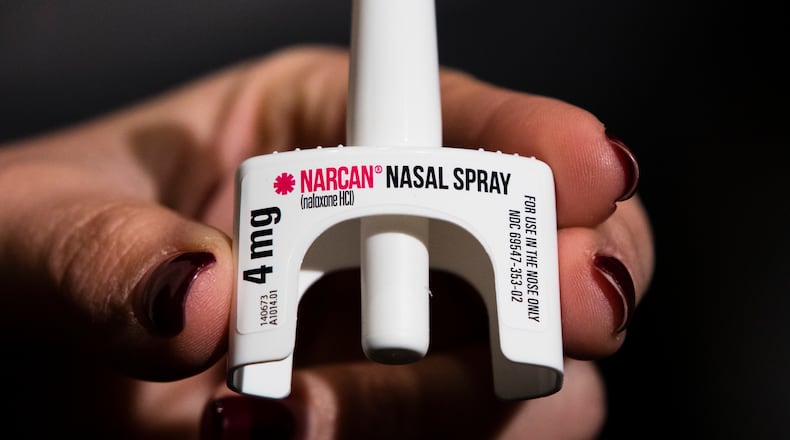“Our hope is that this will help to destigmatize substance use disorder in allowing people to see that it is finally being recognized as an actual disease, as a brain disease, and can be treated medically—can and should be treated medically — like other illnesses and diseases,” said Dawn Schwartz, Community Overdose Action Team project manager.
In July, the FDA also approved another naloxone nasal spray called RiVive for over-the-counter use. The timeline for availability and the price will be determined by the manufacturer, the FDA said.
“We know naloxone is a powerful tool to help quickly reverse the effects of opioids during an overdose. Ensuring naloxone is widely available, especially as an approved OTC product, makes a critical tool available to help protect public health,” said FDA commissioner Robert M. Califf.
Advocates also hope this will increase access and availability of Narcan. Nearly 200 people, or 196 to date, have died from an accidental overdose in Montgomery County, according to preliminary figures from the Montgomery County Coroner’s Office.
Nationally, drug overdose persists as a major public health issue. In the 12-month period ending in February 2023, more than 105,000 reported fatal overdoses occurred, which were primarily driven by synthetic opioids like illicit fentanyl, according to the FDA. In 2021, approximately 106,699 drug overdose deaths occurred in the U.S., of which more than 75% involved an opioid, according to the Centers for Disease Control.
“We think that everybody should have Narcan or naloxone on hand,” Schwartz said. “Addiction is a very secretive disease, and a lot of times we hear from parents and loved ones that they had no idea … about their loved one’s drug use until they witnessed them overdosing or they find something in a room.”
Those who may be taking prescription opioids should also consider having Narcan or naloxone on hand in case they accidentally overdose, as well.
“We also have to remember that even those who are legally prescribed opiates, they do have the ability to accidentally overdose,” Schwartz said.
Someone may forget that they already took their medication and may consume more, accidentally triggering an overdose.
“Narcan is there, so it’s no different to us than knowing CPR, first aid, or maybe having an AED on hand, it’s another lifesaving mechanism, so we think everybody should have it,” Schwartz said.
People who experience an overdose should still seek further medical attention even if the symptoms of the overdose get reversed from using Narcan.
“Narcan allows people to reverse overdoses for enough time for them to get further medical attention for the overdosing person,” Schwartz said. People should also let first responders know if they’ve administered Narcan or naloxone after an overdose, along with how many doses were administered, in order for the first responders to continue treatment, she said.
The cost of over-the-counter Narcan is about $45 to $50, so if someone can’t afford to get it from a pharmacy, there are free options available through Public Health - Dayton and Montgomery County; Montgomery County Alcohol, Drug Addiction and Mental Health Services (ADAMHS); Harm Reduction Ohio; Save Point Ohio; and Project DAWN (Deaths Avoided With Naloxone), the latter of which is a network of opioid overdose education and naloxone distribution programs coordinated by the Ohio Department of Health.
Businesses and churches can consider getting a NaloxBox, which contains naloxone or Narcan and is similar to a mounted Automated External Defibrillator (AED), making this medication accessible to anyone in the event of an opioid drug overdose. The box is free and provided by Public Health or Montgomery County ADAMHS.
To obtain Narcan or a NaloxBox, contact Schwartz at Public Health at (937) 225-6026.
About the Author


